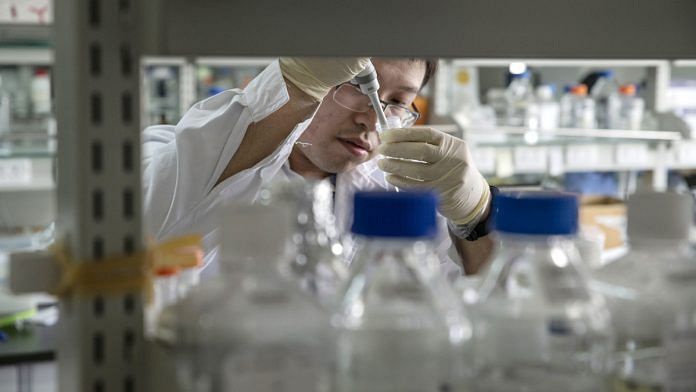In the concluding edition of ScientiFix for 2018, ThePrint takes a look at all the important stories, month-wise, highlighting the most significant developments in the world of science.
January
The year started off with grim news: Scientists ranked 2017 as one of the top three hottest years on record without an El Nino. We also found out that 800 million viruses are deposited daily from the earth’s atmosphere on every single inch of the planet’s surface.
But the biggest story from January was the cloning of a pair of monkeys in China setting the stage for a number of controversial CRISPR related Chinese advancements that 2018 was to see.
February
The second month of the year was all about outer space. Astronomers studying the Andromeda galaxy found that our nearest spiral neighbour wasn’t thrice the mass of Milky Way as previously thought, but about the same. We also discovered the very first extra-galactic exoplanets orbiting stars outside of our galaxy. The biggest story, though, was the detection of light from the very first stars in the universe. The story is significant because we don’t know much about the initial time after the Big Bang. So finding out about the very first stars and how they formed and worked is a big development.
March
Uber stopped all its self-driving cars after a pedestrian was killed by one of the vehicles in March, and we found that Archaeopteryx, a prehistoric feathered dinosaur, was capable of flight. The biggest story once again was human-caused global warming: Greenland’s ice sheet is melting at its fastest rate in 350 years.
April
The Fool’s month saw another burst of astronomy news: the decommissioned Chinese space station, Tiangong-I, fell back on earth and broke up over the Pacific Ocean, and Stephen Hawking’s final paper was published posthumously. Most significant was the establishment of Odilorhabdins, a new class of antibiotics that fight drug resistance.
May
The fifth month presented a number of findings from varied fields. We discovered that Quantum Entanglement was indeed a thing, and also found out that China used CRISPR to produce rice that provided nearly 30% greater yield than traditional rice. Mainly, we found out ominously that somewhere in east Asia was a hotspot that was releasing the banned chemical CFC, damaging the now-rebuilt ozone layer once again.
June
June was all about astronomy again, primarily Mars. While we heard the name of ‘Oumuamua’, an interstellar object passing through the solar system, for the first time, we also saw our red neighbour develop a dust storm that grew big enough to infamously envelop the entire planet, disrupting robotic operations. However, we learned importantly that the Curiosity rover on Mars discovered organic building blocks of life and seasonal variations in methane, something that is possible only through biological or geological processes, both thought to be near-impossible on Mars.
July
In July, the giant planet Jupiter got updated with 12 new moons, making the total number of moons 79. Mars was found to contain a subglacial lake too, but the most significant finding was that of neutrinos in Antarctica whose source was traced all the way to a spinning black hole called a blazar.
August
The wheat genome was fully sequenced this month, after a 13-year long process. We also found out about the security vulnerability named “Foreshadow”, that may affect Intel processors inside personal computers and in third party clouds. The most surprising news of the month was when scientists discovered that complex life could probably be a billion years older than we thought it was.
September
In the much needed field of sustainable energy, scientists found that large-scale solar panels and wind turbines could alter temperature, rainfall, and vegetation, greening the Sahara Desert. We also found out that killer whales could reduce by half within 50 years. A significant finding of the month was the earliest known drawing by humans, estimated to be 73,000 years old. The biggest news of the month, however, was the discovery of the earth’s largest animal that we know to have lived — a dinosaur weighing 11,000 kg.
October
As more women won the Nobel Prizes this year, physicist Donna Strickland’s junior position in her university and lack of a Wikipedia page highlighted sexism in science again. We also got the world’s fastest camera, that shoots at 10 trillion frames per second. But the biggest stunner in October was, once again, climate change. Scientists warned that warning that “rapid, far-reaching and unprecedented changes in all aspects of society” are needed to keep global warming below 1.5 °C and not allow it to climb to 2 °C which could potentially have far more devastating consequences.
November
Researchers announced the discovery of 35 genes that make a person predisposed to chronic kidney disease. The Earth BioGenome Project was launched, which aimed to sequence the genomes of all known 1.5 million living creatures on earth over the next ten years. The biggest story, undoubtedly, was the controversial gene-editing of two baby girls in China.
December
In the last month of the year, China launched a mission to land on the far side of the moon, making it a first in history, as Voyager 2 became the second spacecraft to enter interstellar space. We also found out that 23 billion tonnes of microbes exist up to 5 km deep under the surface of the earth and that flowers originated 50 million years earlier than we thought they did.
Also read: India has learnt to live with a bomb, now it must be open to gene editing too



